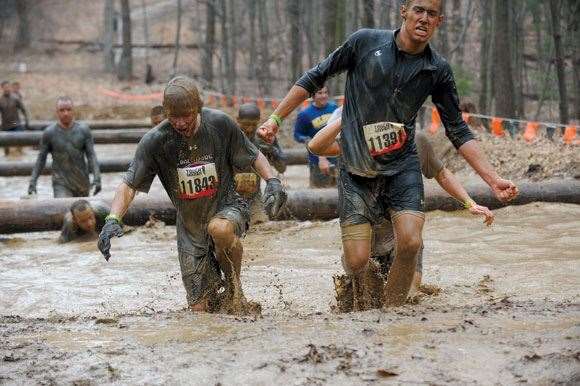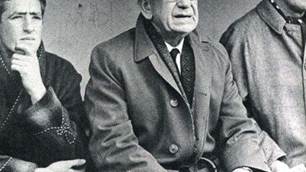20km crawling through mud, running through fields of electrically live wires and hanging onto greased monkey bars, among other things.
 Photos courtesy of Tough Mudder
Photos courtesy of Tough Mudder20km crawling through mud, running through fields of electrically live wires and hanging onto greased monkey bars, among other things.
Harvard Business School holds a noted annual contest for its postgrad students, who come up with ideas for various new ventures and are judged on the business plans they formulate for them. Befitting the ingenuity of Harvard students, many of these plans do become real-life enterprises, in novel niches such as online communities for foreign language learners or low-cost eyeglasses for the Third World.
Will Dean, a former counter-terrorism operative for the British government and Harvard MBA candidate, entered his idea for an endurance race already with a following back in Britain, styled after the military training employed by special forces soldiers. In short, he proposed charging people a couple of hundred dollars to traverse 20km while crawling through mud, running through fields of electrically live wires and hanging onto greased monkey bars, among other things.
Dean’s plan was a semi-finalist in the 2009 contest, but one member of the judging panel thought the core concept was preposterous, about as improbable as the Asian kid playing basketball for Harvard at the time becoming a star in the NBA. But the plan did become a business, and Tough Mudder is now poised to establish itself worldwide. After holding 14 events with a total of 150,000 participants in 2011, it has 32 events set for this year, with an expected 400,000 Mudders. The first Australian event will be held in Victoria at Phillip Island over the end of March and start of April, with one held in Sydney in September.
The emergence of something like Tough Mudder owes more than a little to the reach of social media. It’s hard to imagine that such a pastime could collect its assortment of fitness freaks, restless cubicle workers and the generally over-energetic without the community-building powers of that other Harvard-inspired enterprise, Facebook, and its ilk. Tough Mudder’s killer idea is that it’s participatory – its events are less race and more challenge, with merely finishing more important than a time or a result (78 percent complete the course). Teams are encouraged to enter; the obstacles are designed to be too difficult to finish solo, and unit-style camaraderie will get Mudders through. Finishers receive a free beer and an offer of a tattoo or a haircut (mullet or Mohawk are the choices). Every event stages a big post-party and raises money for veterans groups such as Legacy (Australia) or the Wounded Warrior Project (US).
The subculture created around these events is so distinct, it has obvious appeal for financial backers. “We offer sponsors a captive audience
– our Phillip Island event alone has over 19,000 people signed,” Tough Mudder’s chief marketing officer, Alex Patterson, tells Inside Sport. Tough Mudder’s revenues were $25 million last year, but the main source was still coming from entry fees.
A prominent endorsement came from sports apparel brand Under Armour, which signed on as official outfitter late last year, noting that bunches of the racers were already wearing their gear.
Australia figures highly in this first round of expansion, which will see Tough Mudder events also go to Britain and Canada. Patterson says Tough Mudder had expected a receptive audience among outdoor-oriented Aussies, and was aware of the popularity of events such as City2Surf and other major fun runs. Business-wise, the challenge – or is it a race? – is to get its brand out in front of competitors. Insurance aside, start-up costs aren’t considerable, and this adventure racing space is full of comparable events. Locally, there’s the Valley Stampede, Tough Bloke and Warrior Dash.
The need for exposure raises the thought – could mud-running’s future possibly be as a spectator sport? While its ethos is participatory, Tough Mudder already runs a year-end 24-hour final for the top five percent of finishers from the regular events, named (what else?) World’s Toughest Mudder. “It definitely lends itself to becoming a spectator sport,” Patterson says. “We get thousands of spectators to our events; people who wish to watch their mates run through electric wires or jump into ice baths.”
It’s strikingly visual, more than enough for television (think Wipeout, but serious). More than that, Tough Mudder does seem to be representative of its time.If Chuck Palahniuk was an entrepreneur rather than an author, he might have come up with this, kind of like Fight Club without the fighting. And the organisers definitely want you to talk about it.
‒ Jeff Centenera
Related Articles

Opinion: Gary Player’s golf balls sully momentous occasion

How rugby league scored Tina Turner for its promo













